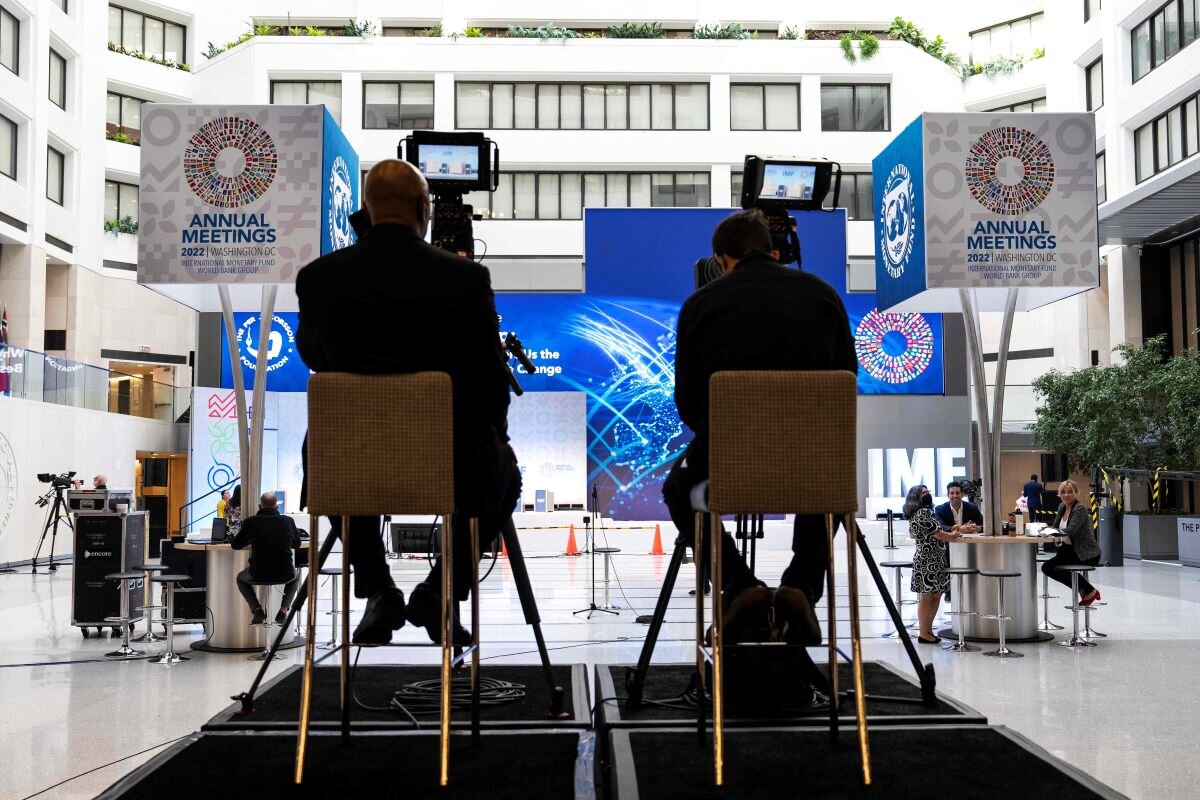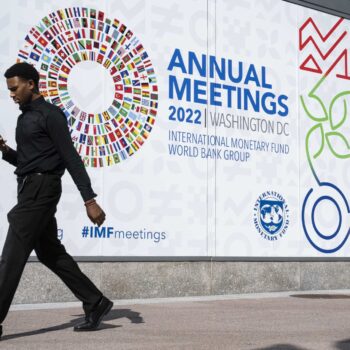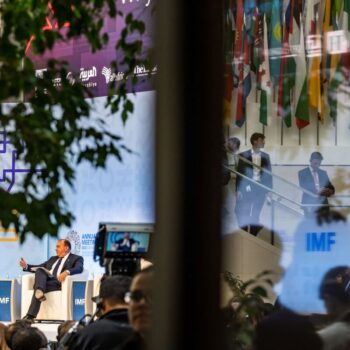International Monetary Fund (IMF) and World Bank shareholders must seize the opportunity this week to course-correct for a future of climate safety. Their Annual Meetings, running 10th – 16th October in Washington DC, will provide governments, Bank and Fund management, and global observers the chance to debate the future of development finance, and how climate policy should be integrated. Set amidst multiple crises gripping the developing world – climate, food, and debt – these institutions must adopt modern approaches to better align their mission and lending practices with Paris climate goals.
It’s no secret that slowing the climate crisis will require investment –in the order of yearly trillions for decades. Much of this will take place in developing countries to construct clean energy systems and adapt to warmer climates.
Enter the World Bank and IMF. With over 75 years’ experience in development finance, they would seemingly make for ideal partners to address the challenge. Picture them out in front, wielding targeted public dollars to de-risk and pull in ever greater amounts of private institutional capital for climate progress.
However, these institutions were not designed to deal with debt, inflation, food insecurity, COVID-19, energy poverty, and climate impacts in dozens of countries simultaneously. They historically financed individual projects– a road here, a pipeline there – with costs and benefits borne by individual countries.
We are now in an era of multiple cross-border crises, where investment in decarbonization must be rapidly scaled to benefit everyone. The current global financial architecture is not fit for this purpose. The poorest countries, trapped in debt, have no room to borrow while climate disasters and external pressures mount. As US Treasury Secretary Janet Yellen reminded us last week, the World Bank and IMF require new instruments, resources, and an evolution roadmap to contend with the needs of the times.
Fortunately, several exciting proposals are up for discussion at the Annual Meetings for shareholders to address these very issues. The pressure is on to deliver both increased quantity (more $$$) and quality of lending (Paris-aligned, no fossil fuel exceptions). Ultimately though, it is up to governments, most notably the US as the largest shareholder, to endorse necessary reforms and bring the World Bank and IMF into the 21st century.
What to watch out for this week
The meetings could regain momentum on reallocating the $100 billion of IMF Special Drawing Rights (SDRs). There is still no consensus on how to channel this potentially deal-making piece of the capital stack for clean energy transitions or other uses. The IMF needs to be able to make a clear statement that the Resilience and Sustainability Trust (RST) is fully funded and ready to move money rapidly, through this and other vehicles, to get developing economies up and running again. If not, why not? And can it be de-linked from IMF country programs?
World Bank shareholders will be pushing hard on the G20 Capital Adequacy Framework (CAF) recommendations. These are hotly debated proposals that could unleash massive new lending. While technical, they involve adjusting internal risk tolerance models and giving more credit to the amount of callable capital pledged to the Bank. We hope to see a consensus emerge on which of the five recommendations are most politically feasible, alongside a plan for its implementation.
Discussions on debt and fiscal space could result in a clear commitment to a better functioning global system – one that deals with debt distress and doesn’t pile on more debt for developing countries. Bold new ideas on natural disaster reprieve clauses and debt-for-climate swaps could provide fiscal redress for climate vulnerabilities. Or shareholders could continue to stand by while this cascading disaster unfolds.
Support for ‘the Bridgetown Initiative’ championed by Mia Mottley, Prime Minister of Barbados, should expand, with fellow governments and thought leaders coming onboard. This suite of reforms appears to sync with the Climate and Development Initiative developed by the UK and Rwanda at COP26, and the priorities advocated by the coalition of vulnerable countries known as the V20. New and joined-up thinking, and coalition-building, are sorely needed for a global financial architecture that works for all.
World Bank President David Malpass needs to strongly advocate climate action or risk losing his job. After repeatedly denying climate science, then clunkily retracting his statements, this week could be a career-defining pivot point for the veteran Trump appointee. Keep watch for new commitments of consequence, rather than a rehash of prior Bank accomplishments.
For information on which E3G experts are on the ground and can give background and comment during this week’s meetings, please see our media advisory: What do the IMF and World Bank annual meetings mean for climate? – E3G



